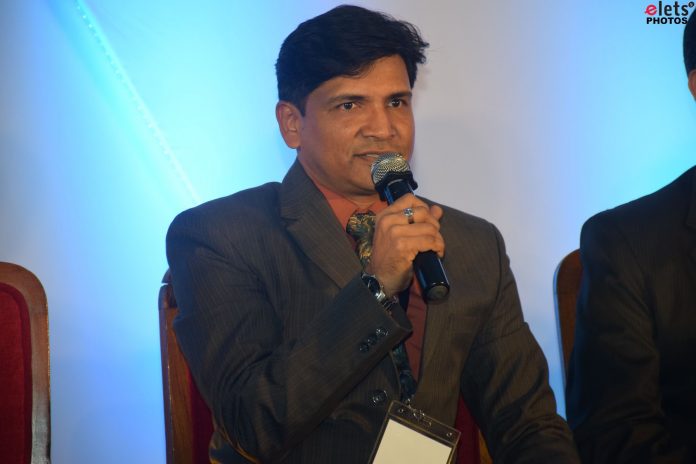
Technology is taking centre-stage to fuel customer experience. Big-data and Deep Machine Learning are being extensively used to understand a customer and the context around him/her. To stay ahead in the competition, exponential technologies like Deep Machine Learning, Artificial Intelligence, Automation and Digital Workspaces are helping organisations come up with innovations, says Abhijit Shah, Chief Technology Officer, DCB Bank, in conversation with Elets News Network (ENN).
How significant is the role of emerging technologies in Indian banking institutions?
A decade ago, one would have believed, Indian banks are following the large global banks in terms of innovation. However, the scenario has drastically changed now. The evolution of the digital landscape in India is at a faster pace than the West.
The payment revolution that has erupted, with Unified Payments Interface (UPI) based money transfers, Aadhaar-based payments, is way ahead than what West has been aspiring to achieve. While the Payment Services Directive (PSD2) has been a mandate in Europe, many Indian banks have emerged as leaders in Open Banking without any mandate.
Not just the setup for open banking, but they have been able to roll out complex multi-entity business models leveraging their API-platforms to integrate Fin-techs, Identity providers, Regulators and Retailers. Indian banks are actively exploring Blockchain based solutions for International remittances, Syndicated loans, Know Your Customer (KYC).
How do you rate India’s readiness as far as implementation of Artificial Intelligence (AI), Machine Learning (ML) or Blockchain in banks is concerned?
To stay ahead in the competition, exponential technologies like Deep Machine Learning, Artificial Intelligence, Automation (AI and Natural language processing based Chatbots, Digital Self-Service) and Digital Workspaces are helping organisations come up with innovations. Technology is taking the centre-stage to fuel customer experience. Big-data and Deep ML are being extensively used to understand a customer and the context around him/ her better and provide an experience on the channel he/she prefers at a specific time in a day. The content here is hyper-personalised to his/her context.
It is an omnichannel experience that cuts seamlessly across channels in real-time and has a convenience-based and frictionless experience with advanced biometric security. The idea is to provide intelligent self-service based on self-learning capabilities.
Over the next five years, the customer experience shall get more interesting, we shall be witnessing user interfaces based on voice, gestures, Augmented Reality (AR), Virtual Reality (VR), eye-ball movement, finger ring-based payments and interactive holographic mannequins getting introduced. Most of these themes are in labs or pilot stages but will hit the production soon.
What are your views on Phygital Banking? How to strike a balance between physical and digital banking in your organisation?
The digital landscape has exploded to a level where every phase of the customer lifecycle from customer onboarding, customer retention to doing more with customers, can be completely digitised, without any need for customers to ever see the branch.
Even the millennial customers are expecting branchless banking. While this is true for Urbans, the Rurals are far behind this expectation curve. Though adoption of digital is happening in rural markets, the need for physical branch is not yet eradicated.
There is a segment of customers who still prefer branch banking and the experience of branch banking in itself, has a lot of transformation avenues. Creativity will drive this new store-like experiences, using Internet of Things (IoT), AI, AR/ VR technologies. These digital-branches are expected to have less branch-staff and more self-service.
What security measures are implemented by banks to curb frauds? Would you like to share a few instances pertaining to this?
Measures like Anti-spam, Endpoint protection, Network traffic monitoring, Encryption, Application whitelisting are already in place for most of the banks. Even with these measures in place, banks would still need to be in a continuous improvement mode.
Financial institutions have invested and are investing in forward-looking cybersecurity technologies. The industry has moved on from Preventive security measures to Predictive measures and now moving towards Prescriptive models.
Artificial Intelligence based cybersecurity solutions are taking the centrestage. Cybersecurity solutions that use Artificial Intelligence and Machine Learning are based on the historical data from prior cyber-events to dynamically detect and respond to newer but somewhat similar attacks.
This principle applies not only to all the stages of security like, threat prevention, threat detection, threat response but also in threat prediction. With all this in place, no bank can still claim, they are threat-proof.
Elets The Banking and Finance Post Magazine has carved out a niche for itself in the crowded market with exclusive & unique content. Get in-depth insights on trend-setting innovations & transformation in the BFSI sector. Best offers for Print + Digital issues! Subscribe here➔ www.eletsonline.com/subscription/





















